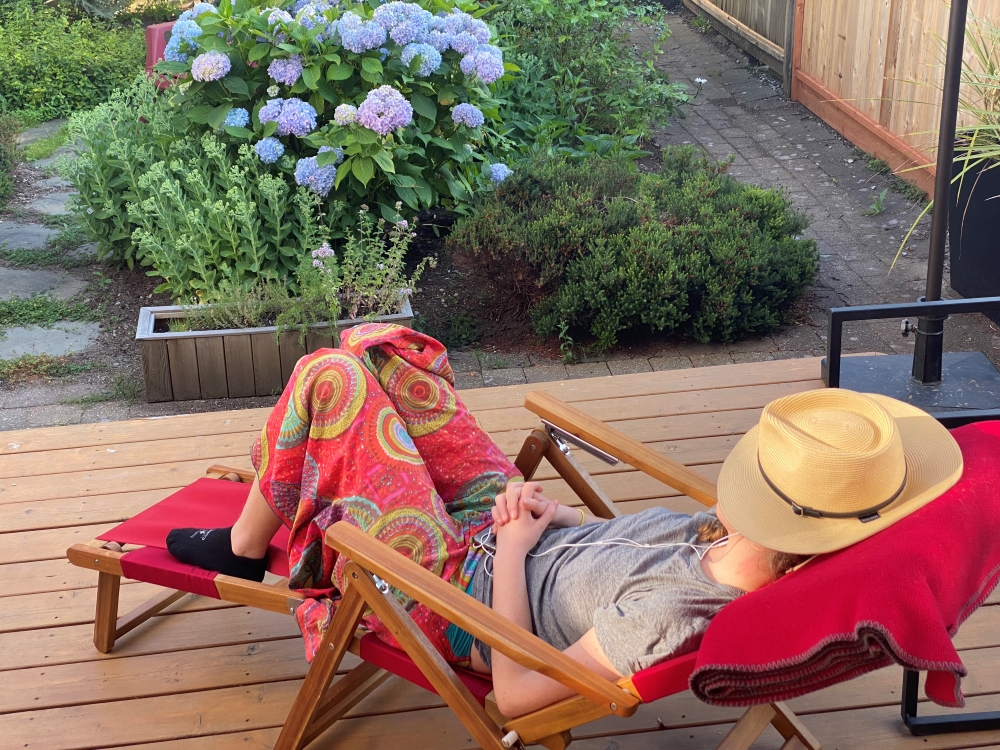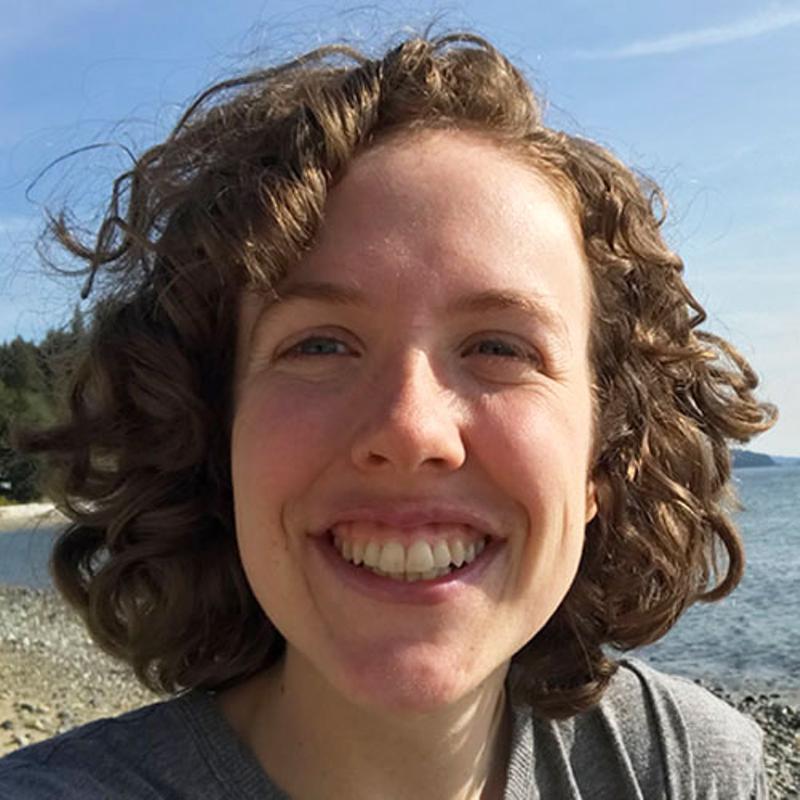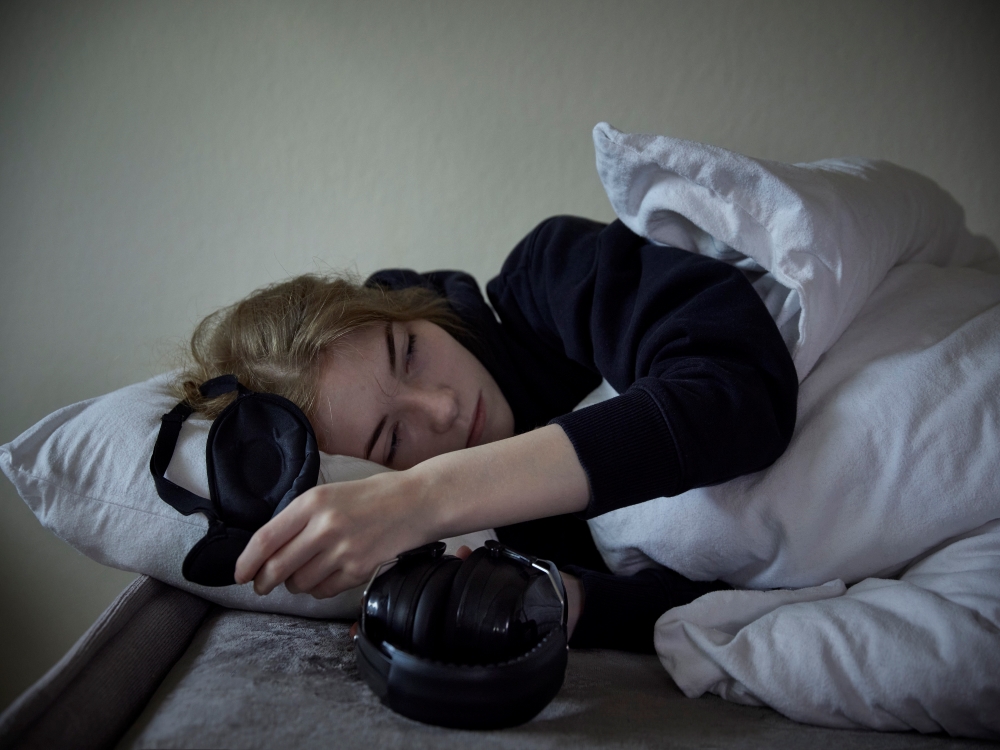Before the pandemic, I was a law student who spent my weekdays studying for long hours and my weekends hiking or cycling. When I developed COVID-19 symptoms in late March 2020, my case was mild, initially, as was the case for most healthy young people.
But then I never got better. The sore throat never went away, and the shortness of breath and fatigue would get better only to get worse again. I spent the first year of the pandemic getting sicker and sicker, until I became mostly housebound, unable to walk around the block, and unable to sit up or think straight for long enough to hold down a job or continue my coursework.
Desperate for help, I was passed from doctor to doctor. I saw an ear, nose and throat specialist, multiple internists, a rheumatologist, a dermatologist and a neurologist, often waiting months between appointments. Each ruled out familiar illnesses within their specialty, then quickly passed me along to someone else. For the most part, they were sympathetic — but they also saw someone very sick who they didn’t know how to help.
I felt like I was in free fall, desperately reaching for something to slow my descent, but with my hands grasping at thin air. One by one, I said goodbye to the pieces of my old life — coursework, exercise, time with friends, my ability to live independently — until all that was left was spending almost all day and night horizontal, occasionally sitting up for food or drink, or standing to walk to the bathroom. It’s hard to appreciate how much energy breathing takes until you’ve experienced the bone-deep fatigue that makes you acutely aware of the effort to expand your ribcage for each breath.
For months, I was told I wasn’t eligible for one of B.C.'s long COVID clinics because I hadn't been eligible to get COVID tested when I was sick in late March 2020. PCR testing then was unavailable to the general public, so I had just isolated at home as directed by public health. Eventually, an autoimmune specialist, impressed with my persistent “COVID toes,” sent the referral through. At my first appointment with the now-closed-down Post Covid Clinic at St. Paul's, almost two years after I got sick, my doctor confirmed what I already knew — that I "tick all the boxes" for both long COVID and myalgic encephalomyelitis/chronic fatigue syndrome, or ME/CFS, a complex chronic illness affecting nearly half of patients with prolonged post-COVID symptoms.
But as the chronic illness community knows too well, a diagnosis does not necessarily lead to effective treatment.
It may be possible to treat some aspects of long COVID. I’ve been prescribed an inhaler for my shortness of breath, and pills for my orthostatic intolerance, so I can now stand for several consecutive minutes without risking fainting. But as a recent summary of the long COVID medical literature in Nature put it, “there are currently no broadly effective treatments for long COVID.”
While COVID-19 is a new illness, post-infection chronic illnesses including ME/CFS have been recognized for decades, but massively under researched. Now, COVID-19 long haulers join the millions of others with post-infectious chronic illness who have been left in limbo, lives on pause or totally upended.
The dissonance in returning to normal
We are living through a mass disabling event. Statistics Canada estimates that there are 1.4 million COVID-19 longhaulers in Canada. As the virus continues to circulate, our ranks keep growing. The World Health Organization estimates that 10 to 20 per cent of COVID-19 infections result in long COVID.
Many of those people recover after several frustrating months, while others, like me, develop potentially life-long chronic health conditions.
The B.C. government, eager to move on from COVID-19, barely acknowledges the growing crisis. At this point, I feel as though the silence must be deliberate. If our government's current plan for long COVID is to literally let hundreds of thousands of British Columbians develop a chronic illness for which there is no treatment and minimal support, then it's past time we had an honest conversation about it.
Long COVID turned my life upside down. Amidst all the loss I’ve experienced, there’s been the cognitive dissonance of watching most of the rest of the world try to return to normal, without me in it. And seemingly unaware of the reality that COVID-19 is still out there, resulting in long-term chronic illness for a significant share of people infected.
It seems the only people who truly understand this reality are those of us who are already sick — whether due to long COVID, or chronic illness from before the pandemic — and some of our caregivers.
ME/CFS advocates predicted at the beginning of the pandemic that COVID-19 would result in a new wave of post-infection chronic illness.
Imagine if we had truly heard their warning.

For long COVID, a dangerous lack of awareness
I don’t share any of this to get pity. I cringe at the thought of it. That’s why, for a long time, I resisted writing this piece. I wanted my health journey to be my business. Plus, there was the practicality of how hard it would be, now, to write something like this. Before COVID, I could have written this essay in a couple days. Now, I write in 20 to 30 minute shifts spread out over many weeks.
I would rather save my precious energy for activities that aid my recovery, or my resilience in the face of relentless illness. But I couldn’t stay silent anymore. Because the lack of public awareness or a government plan for long COVID is dangerous.
Part of the insidious nature of this illness is how easily it is rendered invisible. Those who are sickest are housebound or even bedbound. Our communities don’t see what we’re going through.
When the UBC law school returned to in-person instruction in September 2021, I just wasn’t there. Neighbourhood gatherings, impromptu run-ins on public transit, friends’ potlucks — I wasn’t there. I often wonder how many even noticed I was missing. And I am far from the only one who disappeared.
Even for longhaulers who aren’t housebound, their illness often is not visible. They may not share details with colleagues or friends due to fear of stigma. Many can still work full time, but must follow complex medication regimens and careful pacing and rest. They may no longer be able to exercise beyond a gentle walk.
In addition to so many of us being physically absent from our communities, or present with invisible conditions, there is the reverberating silence of our provincial government on long COVID. I used to listen for Dr. Bonnie Henry to mention long COVID in her press conferences where she’d read out new case counts, hospitalizations and deaths. But I didn’t hear it. In fact, there’s no evidence the B.C. government has even tried to count how many people have developed long COVID. There has certainly been no concerted public warning about it.
There can be no “return to normal” as long as COVID-19 continues to trigger chronic illness and disability en masse. The push to return to normal amounts to a denial or wilful ignorance of long COVID. While it’s understandable to want to put all the fear from the pandemic behind us, it’s inexcusable for those responsible for public health to look the other way while more and more British Columbians get sick.
Preparing for disabled futures
It is common knowledge within the disability community, but a foreign concept outside of it: Anyone, at any time, could become disabled. This has always been true, and is perhaps especially so now, when a virus that causes brain damage and triggers chronic illnesses continues to circulate at a high level. All of us — elders in the disabled community, people newly disabled during the pandemic, and those not-yet-disabled — have a stake in co-creating a more accessible society.
Yet I doubt many non-disabled people have fully grasped this possibility. If the non-disabled majority understood that they, too, could at any point develop a chronic illness that rendered them unable to work, surely disability assistance rates below the poverty line would be politically untenable.
Maybe, buried deep in the minds of the not-yet-disabled, there is an ableist belief that chronically ill people just aren’t trying hard enough. Maybe it’s just too uncomfortable to even consider the possibility of suddenly becoming debilitatingly ill, with no end in sight.
I get that people are sick and tired of worrying about COVID-19. But I’ve been literally sick and tired from living with long COVID for years.
Sami Schalk, a gender and women’s studies professor at the University of Wisconsin-Madison and a leading voice on race, gender and disability offered the following reflection on COVID last fall: “I want us to prepare for disabled futures not fear them.”
We must face the long-term consequences of mass COVID-19 infection and reinfection head on — both to prevent new onset chronic illness where possible, and to build a more inclusive and accessible society that will enable all of us to thrive.
Long COVID has kept people out of work and public life
Long COVID is already affecting our labour market. While Canada thus far has made little effort to track its impact, U.K. government analysis suggests that long-term illness due to long COVID is driving a significant share of the decline in labour market participation.
In the U.S., long COVID could be keeping as many as four million Americans out of work. Harvard economist and professor David Cutler estimates the cost of their lost wages to equal US$1 trillion.
A Lancet study of longhaulers infected prior to June 2020 found that 22 per cent were unable to work, with another 45 per cent working reduced hours. Based on these statistics, we can reasonably assume there are hundreds of thousands of Canadians unable to work due to long COVID, and even more working reduced hours.
This calls for a long-overdue strengthening of our social safety net, as well as a cultural shift towards flexible accommodations to enable people with chronic illness to participate to the fullest extent they can in economic activity, among other aspects of public life.
The rush to return to normal in the name of the economy was always short-sighted, based on the fallacy that the economy can somehow be separated from the health of working people.
If the B.C. government were to take long COVID seriously, it would, accordingly, take seriously the long-term economic benefits of reduced COVID-19 transmission in the form of a healthier workforce.
It would pay greater attention to essential sectors likely to be hit hardest by long COVID — like nursing, already short-staffed, disproportionately exposed to COVID-19 and disproportionately female (which is a risk factor for long COVID and other autoimmune chronic illnesses). As one study on post-COVID conditions in Quebec health-care workers concluded, “the ongoing implications for quality health-care delivery could be profound.”
We are also already seeing growing demand for health care due to the long-term effects of COVID-19 infections. I went from interacting once or twice a year with my family doctor to meeting with medical professionals more often than I see most of my friends. I am not alone.
A recent Canadian study concluded that there is a significant increase in demand for health-care services in the months following a COVID-19 infection. COVID-19 infection increases the risk of dementia, psychotic disorders and seizures at least two years out from infection. And it’s not just the first infection that does damage. A Nature study found each reinfection increases the risk of serious negative outcomes, including cardiovascular disease, diabetes and kidney disease.
B.C. already has a shortage of family doctors. Our health-care system is overstressed.
With every month that COVID-19 continues to circulate at such high rates, B.C.’s population health is declining. As we reflect on changes to improve health-care delivery, we need to plan for the greater demand for health-care services due to post-COVID-19 impacts.
Planning for my own future — and dreaming of a better one for all
I remember, at the beginning of the pandemic, hearing from housebound chronically ill people about how lockdowns made participation in public life more accessible for them. With everyone interacting online from home, they had equal access to cultural events for the first time.
My not-yet-disabled self had never considered that. I didn’t realize then that I would soon join the ranks of the chronically ill people whose access needs include virtual attendance. The only reason I was able to stay in school for the first year of my illness is because courses were online. But now that non-disabled University of British Columbia law students no longer need remote access, there are no more online or hybrid law courses available.
In their book The Future is Disabled, disability justice writer Leah Lakshmi Piepzna-Samarasinha writes, “access is created, it gets taken away/destroyed, but it can be created again.” The first waves of the pandemic saw brief acknowledgement of the needs of elderly and immunocompromised people in the form of a dedicated hour for them to shop before stores got busy. Shopping hours for medically vulnerable people no longer exist, even though more Canadians died of COVID-19 in 2022 than in 2020 or 2021.
The current approach to COVID-19 is simultaneously “removing disabled people's access to public life while creating more disabled people,” writes American disability activist Charis Hill.
It does not have to be this way. We saw glimmers of greater inclusivity earlier in the pandemic, before collective apathy set in and public policy shifted from protecting the vulnerable to letting everyone fend for themselves.
I don’t know if my health will ever be what it was before the pandemic. I doubt it. But I have experienced slow and bumpy improvements in the past year. I am focused now not on trying to magically get my life back to what it was in 2019, but on how to live the fullest life I can with this sick body. I am planning for my own disabled future — while dreaming of a better collective one.
A status quo that normalizes mass COVID-19 infection and reinfection without a plan for the ensuing waves of chronic illness is failing us. We can’t pretend our way back to 2019. Instead, let’s get serious about protecting population health from the long-term effects of COVID-19 as best we can. All while preparing for a more disabled future, with more accessibility and collective care. ![]()
Read more: Health, Rights + Justice, Coronavirus
















Tyee Commenting Guidelines
Comments that violate guidelines risk being deleted, and violations may result in a temporary or permanent user ban. Maintain the spirit of good conversation to stay in the discussion.
*Please note The Tyee is not a forum for spreading misinformation about COVID-19, denying its existence or minimizing its risk to public health.
Do:
Do not: